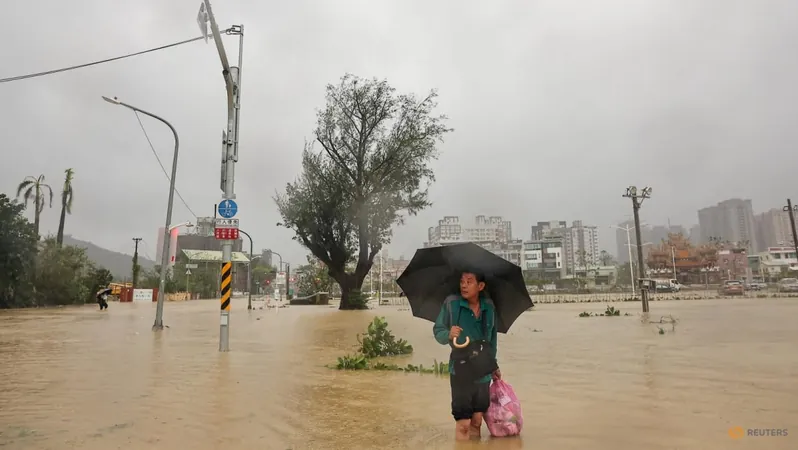
Typhoon Krathon Aftermath: Southern Taiwan Faces Recovery Challenges
2024-10-04
KAOHSIUNG: Southern Taiwan is in recovery mode as it copes with the destruction left behind by Typhoon Krathon, which struck the region on Friday, October 4. The powerful storm made landfall in Kaohsiung, one of Taiwan's key port cities, leading to significant flooding and extensive damage from high winds. While most areas of Taiwan resumed normal activities and financial markets reopened, Kaohsiung and neighboring Pingtung county declared an additional day off work to manage the crisis.
As Krathon has now been downgraded to a tropical depression, the city government has focused on pumping out floodwaters, clearing debris, and restoring essential services. "We aim to restore transport, water, and electricity as quickly as possible so that life can return to normal," stated Kaohsiung Mayor Chen Chi-mai during a press briefing.
Authorities reported that over 2,000 trees fell onto streets, blocking numerous roads and creating dangerous conditions for pedestrians. Remarkably, only two injuries were reported as a result of the chaos. "Sandbags didn’t hold up against the water pushed by the winds," noted local resident Clark Huang, 49. "Thankfully, the worst lasted only a few hours before we began our cleanup."
Among the witnesses to the storm's ferocity, 51-year-old engineer Tsai Ming-an described his experience, stating, "I've never felt winds like that. It was a terrifying event." His home was severely affected, with floodwaters rising nearly 20 centimeters on the ground floor.
In an unusual twist, Typhoon Krathon deviated from the frequent path taken by storms, which typically hit Taiwan’s mountainous, less populous eastern coast. Instead, it unleashed its fury on the flat western coastline, directly impacting urban centers.
As of Friday, almost 100,000 households in Kaohsiung and Pingtung were still without power, while 129,000 households faced water shortages. The official death toll stands at two, with both fatalities occurring on the east coast prior to the storm's landfall. Additionally, one person remains missing and nearly 670 others were reported injured.
Transport services have begun to slowly resume. The north-south high-speed rail and many regular rail routes have reopened, though some branches remain closed. However, air travel continues to face severe disruptions, with 15 international and 88 domestic flights canceled.
Despite the damage, operations at Kaohsiung port are gradually returning to normal. Workers are diligently clearing freight containers that were displaced during the storm to maintain shipping schedules. Kaohsiung airport has reported damage to two air bridges, while the outlying Orchid Island airport lost essential landing aids, yet both facilities remain operational.
Furthermore, as the recovery efforts unfold, the government is investigating a tragic fire at a hospital in Pingtung that ignited amidst the turmoil of the storm, resulting in nine fatalities.
In summary, the aftermath of Typhoon Krathon has presented significant challenges for southern Taiwan, as local authorities and residents strive to restore normalcy in the face of unprecedented natural calamity. As they pull together to rebuild, the resilience of the Taiwanese spirit shines through amidst the wreckage.






 Brasil (PT)
Brasil (PT)
 Canada (EN)
Canada (EN)
 Chile (ES)
Chile (ES)
 España (ES)
España (ES)
 France (FR)
France (FR)
 Hong Kong (EN)
Hong Kong (EN)
 Italia (IT)
Italia (IT)
 日本 (JA)
日本 (JA)
 Magyarország (HU)
Magyarország (HU)
 Norge (NO)
Norge (NO)
 Polska (PL)
Polska (PL)
 Schweiz (DE)
Schweiz (DE)
 Singapore (EN)
Singapore (EN)
 Sverige (SV)
Sverige (SV)
 Suomi (FI)
Suomi (FI)
 Türkiye (TR)
Türkiye (TR)